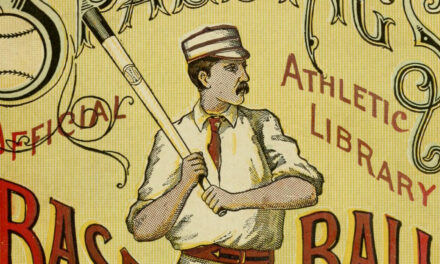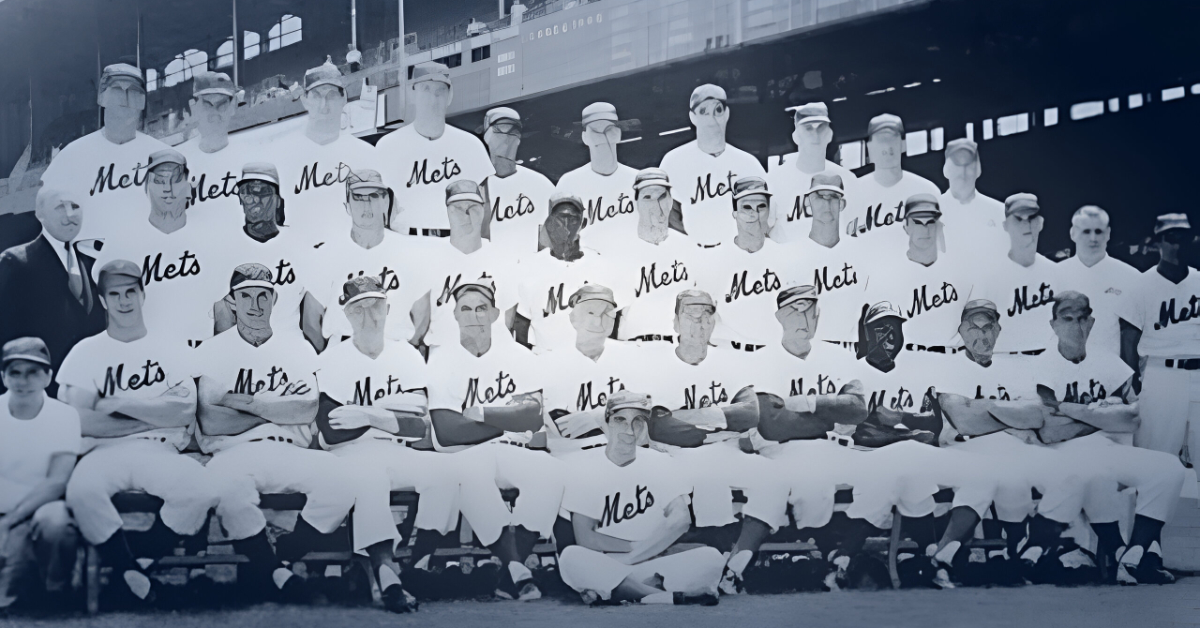
The Amazin’ 1962 New York Mets
In the 1962 New York Mets’ first season in the National League, they set a modern record for futility in Major League Baseball’s modern era. The expansion team managed to lose 120 games while only winning 40—a winning percentage of .250. But despite the team’s abysmal record, the New York fans loved the Mets. They may have been losers, but to their devoted fans, they were lovable losers.
1961: The Mets Are Born
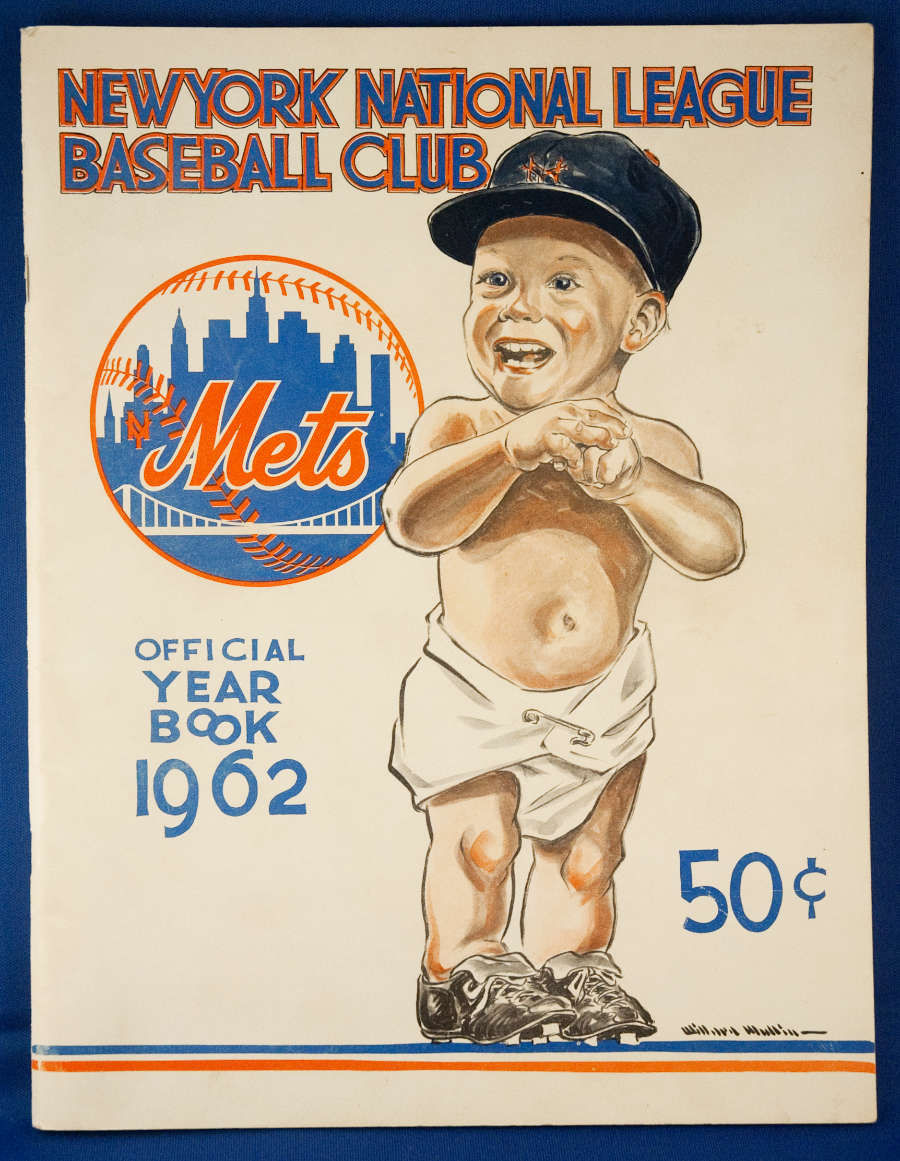
The official 1962 New York Mets yearbook. (Photo by the author from his collection)
When the Brooklyn Dodgers and the New York Giants moved to California following the 1957 season, New York was left with no National League baseball team for the first time since 1883, when the Giants took the field as the New York Gothams.
Civic leaders in America’s largest city recognized that the city and its many abandoned Dodgers and Giants fans needed a National League team. Led by attorney William Shea, city leaders formed a committee to bring NL baseball back.
When that did not appear likely, Shea and leaders from other cities announced plans for the formation of a third league, the Continental League, that would include a New York franchise and begin play in 1961. In response, the National League agreed in 1960 to expand from eight teams to ten, with new franchises in New York and Houston.
In March 1961, the New York Metropolitan Baseball Club, Inc. was certified as a member of the National League, and the “Mets” were born. They cemented their claim to New York’s National League baseball heritage by adopting as their team colors the orange of the Giants and the blue of the Dodgers. And while their new stadium was being built, they arranged to play in the Giants’ old ballpark, the Polo Grounds in Upper Manhattan.
The Mets' Brain Trust
The new Mets also had Yankees connections. The team hired George Weiss, General Manager of the Yankees from 1947 to 1960, as its president. Weiss, in turn, brought 71-year-old Casey Stengel out of retirement to manage the Mets. “The Old Perfesser” had managed the Yankees from 1949 to 1960, leading them to 10 pennants and 7 World Series championships. Stengel had also played for the Giants and played for and managed the Dodgers. With his colorful personality, great baseball acumen, and status as the only man to have worn the uniform of all four New York baseball teams, he was the perfect choice to be the field leader of the fledgling team.
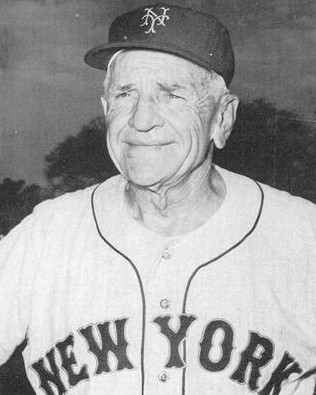
Casey Stengel as Mets manager, circa 1963. (Jay Publishing via tradingcarddb.com, Public domain, via Wikimedia Commons)
And it’s a good thing Casey Stengel was colorful and entertaining because the 1962 New York Mets were terrible. Before the season began, Weiss said the Mets were aiming for a .500 record. But the Mets finished with a 40–120 record, which put them firmly in last place, 60-1/2 games behind the first-place San Francisco Giants. The 120 losses were the most by any team since the Cleveland Spiders lost 134 games in their 1899 inaugural season.
Casey handled the losing with characteristic humor. Urging fans to come to the ballpark to root for the “Amazin’ Mets,” he said, “I’ve been in this game a hundred years, but I see new ways to lose I never knew existed before.”
Meet the Dodgers ... er, the Mets
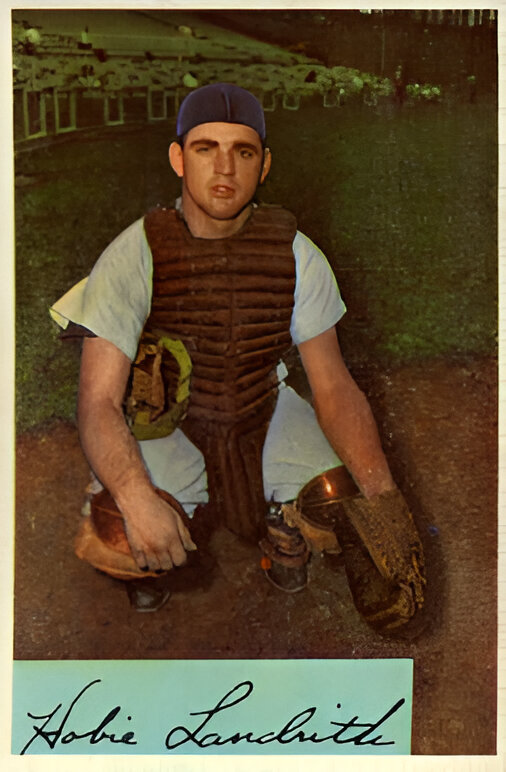
Catcher Hobie Landrith, the first player chosen by the Mets in the expansion draft, as shown on his 1954 Bowman baseball card. (Bowman Gum, Public domain, via Wikimedia Commons)
After the 1961 World Series, the National League held its first-ever expansion draft to provide players for its two new teams, the New York Mets and the Houston Colt .45s. Most of the players made available in the draft were young, unproven players, journeymen, or players past their prime. The Mets selected 22 players in the draft. With their first pick, the Mets chose catcher Hobie Landrith of the San Francisco Giants.
The best player they selected was former Brooklyn and Los Angeles Dodgers first baseman Gil Hodges, who was an eight-time All-Star and three-time Gold Glove winner in the course of 16 seasons. Hodges ended his playing career in 1963 but came back to the Mets as the manager in 1968 and took them to their first World Series title in 1969. Hodges was posthumously inducted into the Baseball Hall of Fame in 2022.
The 1962 Mets roster included six other players who were Brooklyn Dodger alumni as well: pitchers Clem Labine and Roger Craig, infielders Don Zimmer and Charlie Neal, and catcher Joe Pignatano, along with coach Cookie Lavagetto.
A total of 45 players wore the uniform of the 1962 New York Mets in the course of the season, including one future Hall of Famer, Richie Ashburn, playing in what would be his last season. None of the players in the Opening Day lineup had a lengthy tenure with the Mets, as shown in the chart below. Gil Hodges, of course, returned to the organization later as the Mets’ manager.
Opening Day: The 1962 New York Mets Take the Field
Rain postponed the Mets’ scheduled opener on April 10 against the St. Louis Cardinals at Busch Stadium in St. Louis. On Wednesday night, April 11, the Mets played their first-ever game and got a look at what was to come for the season as the Cardinals beat them 11–4. Gil Hodges and Charlie Neal hit solo home runs for the Mets, but the Cards’ hitters, led by Stan “The Man” Musial, Curt Flood, Julian Javier, and Bill White, overpowered the Mets’ pitching.
Meet the Mets (1962 version)
The Mets’ official theme song, “Meet the Mets,” was written by Ruth Roberts and Bill Katz. The phrase “East side, West side” in the lyrics is a tribute to “The Sidewalks of New York,” a popular song from the 1890s.
The Opening Day Lineup
The disappointing result on Opening Day did not diminish the enthusiasm displayed by thousands of New Yorkers the next day, as the city gave the team a ticker-tape parade down Broadway followed by a reception at City Hall. New York Mayor Robert F. Wagner, Jr., proclaimed it “New York Mets Day” as he welcomed the return of National League baseball to “the sports capital of the world.”
The mayor paid tribute to manager Casey Stengel, calling him “the man who represents the spirit of New York as well as any New Yorker I have ever known.” As the Brooklyn Daily reported, Casey “introduced his ‘Amazin’ Mets’ one by one. Old Case was in rare form as he rattled through the names, leaving out men here and there, mispronouncing some, and generally confusing everyone.”
The crowd loved it. New York’s love affair with its new National League team had begun.
The Mets' First Win
After their Opening Day loss, the Mets went on to lose eight more games, including their home opener against the Pittsburgh Pirates on April 13, before finally picking up their first win on April 23.
Meeting the 10–0 first-place Pirates at Pittsburgh’s Forbes Field, the Mets’ hitters struck early against the Pirates’ Tom Sturdivant. The Mets scored 2 in the 1st inning on consecutive sacrifice flies by Gus Bell and Frank Thomas. In the 2nd inning, the Mets chased Sturdivant after a lead-off double by Charlie Neal and two walks, scoring 4 runs in the inning to take a 6–0 lead. Jay Hook pitched a complete game, giving up only 1 run on 5 hits to secure the victory. The Mets were finally in the win column!
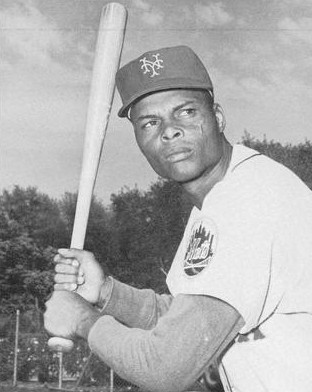
Charlie Neal, shown here in a 1963 photo, was one of the Mets' most versatile and productive players in 1962. (Jay Publishing via tradingcarddb.com, Public domain, via Wikimedia Commons)
And Finally, a Win at the Polo Grounds
Unfortunately, the Mets notched only two more wins in April and finished the month with a 3–13 record. But they did pick up their first win at home before the end of the month, beating the Phillies 8–6 at the Polo Grounds on April 28.
Although Jay Hook gave up 4 runs and lasted only 2/3 of an inning, the Mets came back to score 6 runs in the 6th inning to erase a 6–1 deficit. The inning included three consecutive home runs by Frank Thomas, Charlie Neal (his second of the game), and Gil Hodges. Jim Hickman homered in the 8th to give the Mets an insurance run, and Roger Craig wrapped up the game for his first win with three scoreless innings in relief.
The Streaky Month of May
The Mets fared considerably better in May than they had in April, compiling a 9–17 record and .346 winning percentage. The Mets put together their best stretch of the season from May 6 to May 20, when they won 9 out of 12 games to improve to 12–19 and climb to 8th place, ahead of the Colt .45s and the Chicago Cubs. Maybe the “Amazin’ Mets” moniker wouldn’t be so ironic after all.
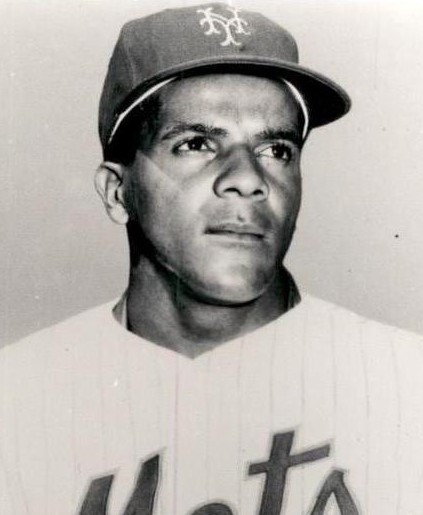
Elio Chacón played in 110 games at shortstop for the 1962 Mets. Félix Mantilla, the Opening Day shortstop, played third base for most of the season after Don Zimmer was traded to the Reds in May. (New York Mets, Public domain, via Wikimedia Commons)
This great two-week stretch included two doubleheader sweeps of the Milwaukee Braves. On May 12—maybe the most exciting day of the season—the Mets beat the Braves at the Polo Grounds in two terrific 1-run games. In the opener, with the Mets trailing 2–1 with 2 outs in the bottom of the 9th, catcher Hobie Landrith hit a 2-run walk-off home run off of future Hall of Famer Warren Spahn to give the Mets a come-from-behind 3–2 win.
In the nightcap, trailing 7–6 in the bottom of the 8th, the Mets tied the game on an RBI single by shortstop Elio Chacon. In the bottom of the 9th, the Mets got their second walk-off win of the day courtesy of a 1-out home run by Gil Hodges. Craig Anderson picked up both wins with a total of 3 scoreless innings in relief.
On May 20, in the first game of two at Milwaukee’s County Stadium, the Mets were trailing 5-1 in the 8th. They scored 2 in the 8th and 4 more in the 9th in “small ball” style, putting together a mix of hits and groundouts to come away with another come-from-behind victory. The second game was less dramatic, but the Mets again came away with the win, 9–6, as Charlie Neal, Félix Mantilla, and Frank Thomas all homered.
This second doubleheader sweep, which also gave them a three-game winning streak (tied for their longest streak of the season), apparently wore the Mets out, though. From May 21 to June 6 they suffered through a 17-game losing streak that included 17–6 and 13–8 losses to the Dodgers and 10–1, 7–1, and 6–1 losses to the Giants.
The Mets won four out of six after the losing streak ended, but other than a second modest three-game winning streak against the Cincinnati Reds in early August, they were never again able to put together a consistent span of over .500 baseball.
Al Jackson Throws a One-Hitter
The fans of the 1962 Mets didn’t get to witness much brilliance on the field. But one highlight of the season was Al Jackson’s pitching gem at the Polo Grounds on June 22, when he threw a masterful one-hitter against the Colt .45s for a 2–0 win.
The only hit Jackson allowed was a 1st inning single by Joey Amalfitano. He gave up a walk to Norm Larker in the 1st and another to Pidge Browne in the 9th. In between, he retired 22 batters in a row with 9 strikeouts. Richie Ashburn hit a leadoff home run for the Mets in the 1st inning and walked and scored a run in the 6th to provide the Mets’ margin of victory.
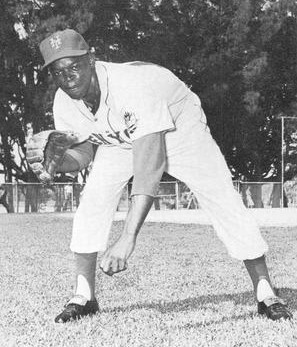
Left-handed pitcher Al Jackson pitched four shutouts, including a one-hitter, for the 1962 Mets. (Jay Publishing via tradingcarddb.com, Public domain, via Wikimedia Commons)
Jackson Outpitches Bob Gibson
Al Jackson’s one-hitter was his second complete game shutout of the season. On April 29, he had scattered 8 hits as the Mets beat the Phillies 8–0 for the second straight home victory. On July 27, he pitched another memorable game, as he outdueled All-Star and future Hall of Famer Bob Gibson for a 1–0 Mets win at Busch Stadium. This time Jackson allowed 9 hits, but he was able to keep the Cardinals from scoring by inducing timely ground balls, including 3 double play balls. Gibson allowed 7 hits, but Choo Choo Coleman’s single in the 3rd gave the Mets the only run they’d need when he scored on an error.
This was the Mets’ only win against Gibson in 1962. They had lost to him 15–1 on July 8, and he would go on to shut them out 10–0 on August 18. He also picked up a save against the Mets in the Cardinals’ win on July 29.
Frank Thomas Hits Six Home Runs in Three Games
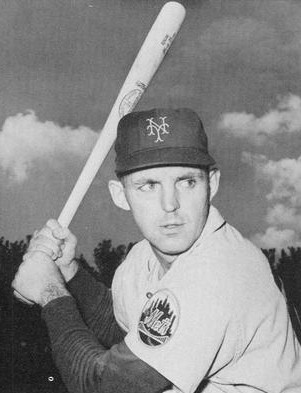
Frank Thomas led the 1962 Mets with 34 home runs and 94 RBIs. (Jay Publishing via tradingcarddb.com, Public domain, via Wikimedia Commons)
Although the Mets lost their first three games in August, left fielder Frank Thomas gave the fans a reason to cheer by slugging six home runs, two in each game. The first of the six was a 4th-inning grand slam off the Philadelphia Phillies’ Jack Hamilton on August 1, but the remaining five homers were all solo shots. On August 2, Thomas touched Phillies pitcher Art Mahaffey for two solo homers, but Mahaffey retaliated with a grand slam off the Mets’ Craig Anderson. Thomas continued his slugging ways against the Reds on August 3, but again the Mets were outhit.
With the six home runs, Thomas had 25 for the season. He hit nine more the rest of the way, ending the season with 34 home runs and 94 RBIs to lead the Mets by wide margins in both categories. His home run total was a Mets team record until 1975, when it was broken by Dave Kingman.
Who's on First? From Marvelous Marv to Ed Kranepool
In May, the Mets had obtained Marv Throneberry in a trade with the Baltimore Orioles, and Throneberry became their regular first baseman for most of the season. He had some power and hit 16 home runs for the Mets, but he committed 17 errors and acquired the ironic nickname “Marvelous” Marv Throneberry for his lack of fielding prowess. Clearly, Throneberry was not the first baseman of the Mets’ future.
On September 22, 17-year-old Ed Kranepool made his debut as a defensive replacement at first base. The next day, he was in the starting lineup against the Cubs in what turned out to be one of the Mets’ most exciting wins of the season. Frank Thomas hit his 33rd home run of the year in the 6th inning to tie the game 1–1. Then, with two outs in the bottom of the 9th, Thomas drove in Choo-Choo Coleman for a walk-off 2–1 win.
Kranepool was the youngest player on the team by some six years and did not immediately stick with the Mets, making several trips back to the minors in the coming seasons. But he endured as the eventual everyday first baseman and spent his entire 18-year career with the Mets, playing more games as a Met than any other player and leading the team in eight offensive categories when he retired.
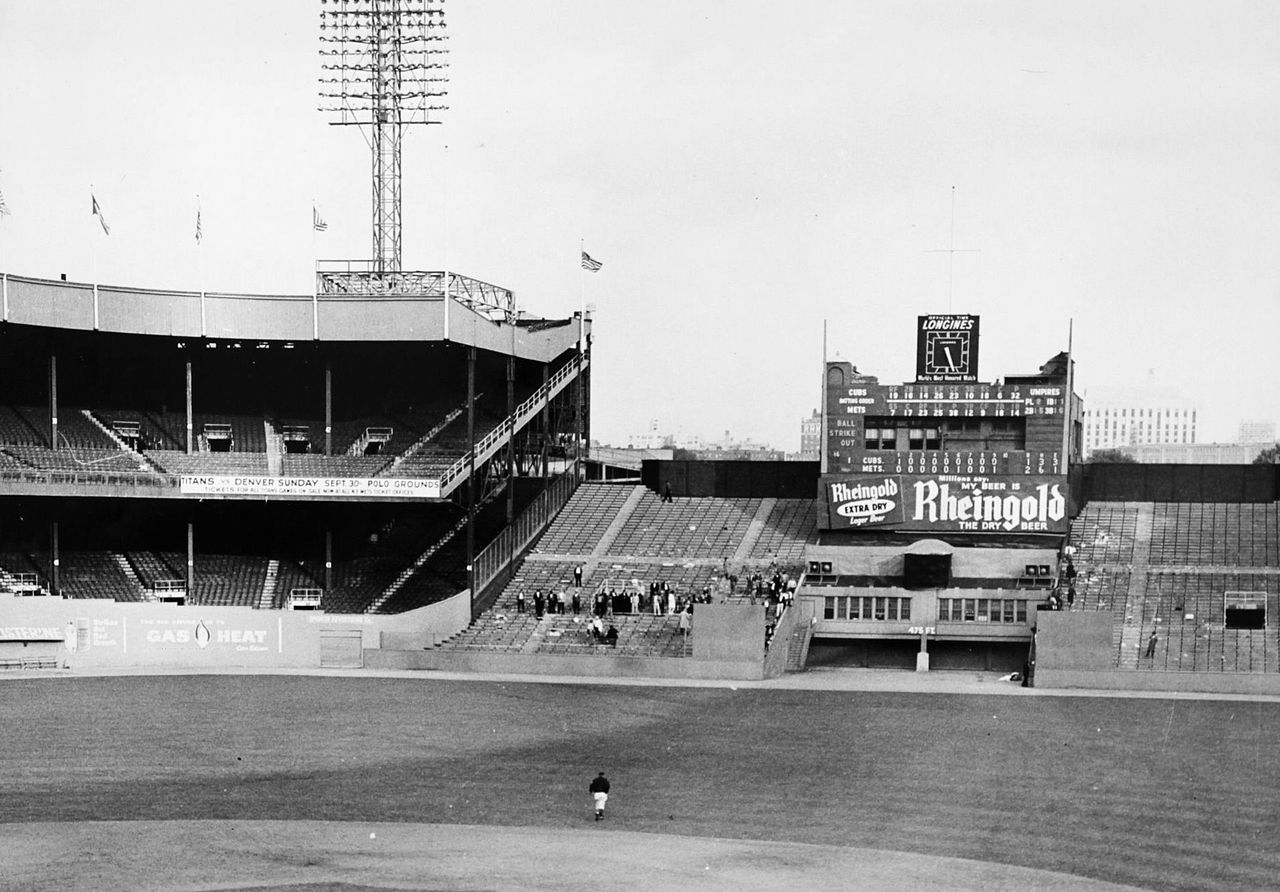
Center field at the Polo Grounds on September 23, 1962, after the Mets' 2–1 walk-off win against the Chicago Cubs. (The Sporting News Archives, Public domain, via Wikimedia Commons)
The 1962 Mets Get Their 40th Win
On September 29, the second to last day of the season, the Mets beat the Cubs 2-1 at Wrigley Field for their 40th win of the season. Bob Miller pitched a complete game for his first win after 12 losses. More significantly for the Mets, it was their 9th win against the Cubs, allowing them to avoid the possibility of finishing their season with a losing record against every team in the league. They did lose the following day, but at least they completed the season series against the Cubs with a 9–9 record.
The Lovable Losers
The 1962 Mets finished last in the 10-team league, 60 games out of first place, with a 40–120 record, the worst in modern baseball history. They managed to play better at home than on the road, but only slightly, with a 22–58 home record versus an 18–62 mark away from the Polo Grounds.
The Mets had a losing record against every team in the National League other than the Cubs, finishing with exceptionally lopsided 2–16 marks against both the Dodgers and the Pirates. They were outscored by 331 runs, with almost equally bad results in 1-run losses (39) and blowouts (37). It’s no wonder that Casey Stengel was quoted (by Jimmy Breslin, probably inaccurately) as asking, “Can’t anybody here play this game?”

Vintage 1962 New York Mets bobblehead figurine. (Photo by the author from his collection)
Yet, losers though they were, the 1962 New York Mets somehow captured fans’ imagination and were often referred to as “lovable” losers. 922,530 fans paid to “meet the Mets,” as their theme song urged them to do—more than the Yankees drew. Even Stengel called them his “amazin’” Mets. They didn’t truly become amazing, at least in a positive way, until 1969, when they came out of nowhere to win the pennant and the World Series. But in the summer of 1962, it was amazing enough that National League baseball was back in New York.
Did You Know?
- On April 13, 1962, the Mets lost their home opener at the Polo Grounds, 4–3, to the Pirates. Two years later, on April 17, 1964, they also lost 4–3 to the Pirates in the home opener at their new ballpark, Shea Stadium.
- Although Al Jackson’s one-hitter on June 22, 1962, was the first of 35 one-hitters thrown by Mets pitchers over the team’s first five decades, the Mets had no no-hitters during that span. On June 1, 2012, in their 8,020th game, the Mets finally got a no-hitter when Johan Santana beat the Cardinals 8-0.
- In the longest game of the Mets’ first season, a 3–1 loss to the Phillies in 15 innings on August 14, Al Jackson pitched all 15 innings.
Copyright © Brian Lokker 2011, 2023. An earlier version of this article was published on HubPages.com in 2011 and was subsequently featured on HowTheyPlay.com.


